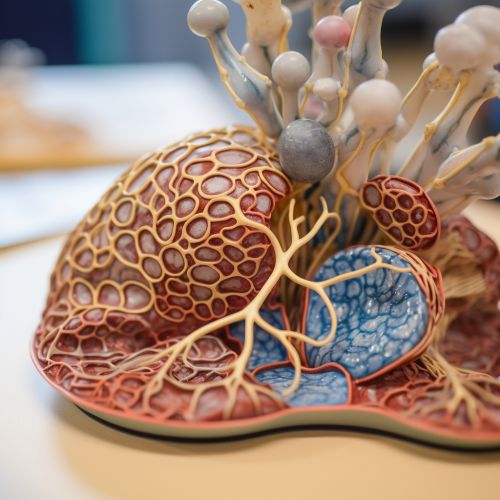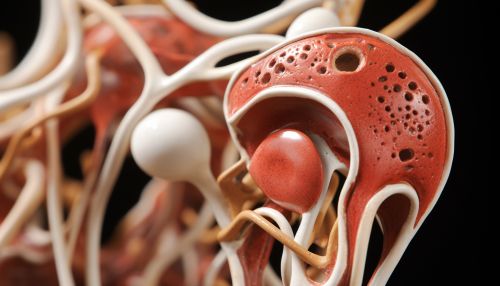Adrenal Glands
Anatomy and Location
The adrenal glands are small, triangular-shaped glands located on top of both kidneys. They are part of the body's endocrine system, which is responsible for producing hormones that regulate metabolism, immune system, blood pressure, and other essential functions. Each adrenal gland is divided into two distinct parts: the adrenal cortex and the adrenal medulla, each having different functions and producing different hormones.


Adrenal Cortex
The adrenal cortex is the outer part of the adrenal gland. It produces hormones that are vital to life, such as cortisol (which helps regulate metabolism and helps your body respond to stress) and aldosterone (which helps control blood pressure). The adrenal cortex is further divided into three zones: the zona glomerulosa, the zona fasciculata, and the zona reticularis. Each of these zones produces a different type of hormone.
Zona Glomerulosa
The outermost layer of the adrenal cortex, the zona glomerulosa primarily produces mineralocorticoids, of which the most significant is aldosterone. Aldosterone plays a crucial role in maintaining the body's balance of sodium and potassium, which in turn regulates blood volume and blood pressure.
Zona Fasciculata
The zona fasciculata is located between the zona glomerulosa and zona reticularis. This layer is responsible for producing glucocorticoids, particularly cortisol. Cortisol helps to regulate the body's response to stress, maintain glucose metabolism, and suppress the immune response.
Zona Reticularis
The innermost layer of the adrenal cortex, the zona reticularis, produces androgens, the most important of which is dehydroepiandrosterone (DHEA). This hormone is converted into testosterone and estrogens in the gonads and other target organs.
Adrenal Medulla
The adrenal medulla is the inner part of the adrenal gland. Unlike the adrenal cortex, the adrenal medulla produces nonessential (i.e., you don't need them to live) hormones, such as adrenaline (epinephrine) and noradrenaline (norepinephrine). These hormones are responsible for the body's fight-or-flight response to stressful situations.


Adrenal Gland Disorders
There are several disorders associated with the adrenal glands, including Addison's disease, Cushing's syndrome, and adrenal cancer. These disorders can result from producing too much or too little of certain hormones.
Addison's Disease
Addison's disease is a disorder in which the adrenal glands do not produce enough cortisol and, often, not enough aldosterone. Symptoms may include fatigue, muscle weakness, weight loss, and low blood pressure.
Cushing's Syndrome
Cushing's syndrome results from the adrenal glands producing too much cortisol over a long period. Symptoms can include weight gain, thinning skin, and high blood pressure.
Adrenal Cancer
Adrenal cancer is a rare form of cancer that begins in the adrenal glands. Symptoms can vary depending on whether the tumor is producing excess hormones and which hormones are being overproduced.
